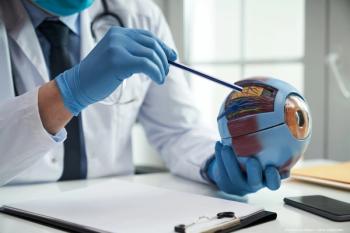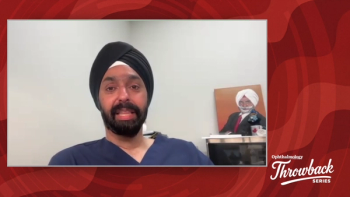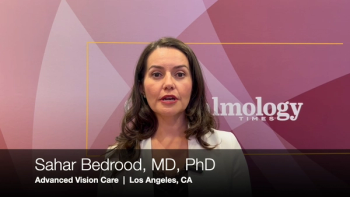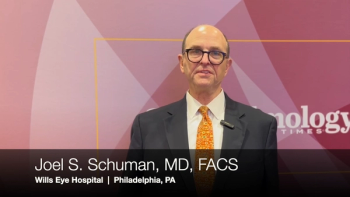
Avoiding issues from inflow procedures
CPC for glaucoma requires special finesse for surgery
A careful use of technique, power parameters, and preventive moves against IOP spikes can make cyclophotocoagulation or phaco and ECP more effective.
Reviewed by Jeffrey Kammer, MD
Close attention to details when performing
With transscleral cyclophotocoagulation, the most vision-threatening complications include
“Surgeons also should titrate their power appropriately. “When using the classic
Avoid the ‘pop’
Dr. Kammer tries to avoid hearing a loud “pop” because this is indicative of tissue destruction. In these cases, he typically starts with a power between 1,750 to 2,250 mW (higher watts in patients with lighter pigmentation and lower watts in patients who are more heavily pigmented), with a duration of 2,000 mS and six spots per quadrant. Surgeons also may want to consider the use of the alternative Gaasterland “slow coagulation technique” that was popularized by glaucoma specialist
In this treatment paradigm, patients are treated with lower energy per pulse but with longer treatment duration. Patients typically experience less pain, less inflammation, and less macular edema, albeit with similar efficacy compared to the traditional CPC treatment paradigm, according to Dr. Kammer. Dr. Kammer also stressed that cyclophotocoaguation should not be relegated to endstage glaucoma.
In fact, he noted that
Embracing the use of newer techniques, (
Dr. Kammer also shared a Micropulse cyclophotocoagulation technique-related pearl, recommending that surgeons’ probe axis be placed roughly 1 mm behind the limbus and perpendicular to the sclera. This is in contrast to classic transscleral cyclophotocoagulation, where you hold the Gprobe immediately behind the limbus and parallel to the visual axis, he said.
RELATED:
Avoiding spikes
Dr. Kammer also took a closer look at common complications, such as IOP spikes, to analyze why they occur and how surgeons can avoid them. He said research has found that IOP spikes occur about 14.4% of the time in ECP procedures and that they typically can be caused by excessive inflammation, retained viscoelastic, excessive treatment, and can also be a steroid response.
Less commonly, the spikes are caused by aqueous misdirection and choroidal effusion. To help prevent an
If IOP elevation does occur, surgeons should use aggressive topical steroids, an oral steroid bolus, increase topical glaucoma drops and/ or augment treatment with
If an IOP spike still occurs, treatment options include increasing topical drops and/or oral CAIs, “burping” the wound, and simply giving the viscoelastic time to break down on its own. If the IOP spike is recalcitrant to conservative options, returning to the OR for surgical removal is the most appropriate step, Dr. Kammer advised.
To avoid an IOP spike secondary to retained pigmentary debris, avoid causing a “pop” (explosion of tissue) during treatment. If this does occur, it can typically be remedied by spending additional time clearing out the debris during irrigation and aspiration. If a spike persists, increasing topical drops and/or oral CAIs and increasing the frequency of postoperative steroids usually ameliorates the situation.
To help avoid steroid-related IOP spikes, Dr. Kammer recommended staying away from some of the more potent topical steroids and minimizing topical steroid frequency and duration in patients who are known steroid responders. In these cases, it is advisable to supplement the less frequent topical steroid use with topical nonsteroidal
CME risks
Dr. Kammer also addressed the risk of
RELATED:
Disclosures:
Jeffrey Kammer, MD
E: [email protected]
This article was adapted from Dr. Kammer’s presentation at the 2019 American Glaucoma Society annual meeting. Dr. Kammer is a consultant for Iridex.
Newsletter
Don’t miss out—get Ophthalmology Times updates on the latest clinical advancements and expert interviews, straight to your inbox.


















































.png)


